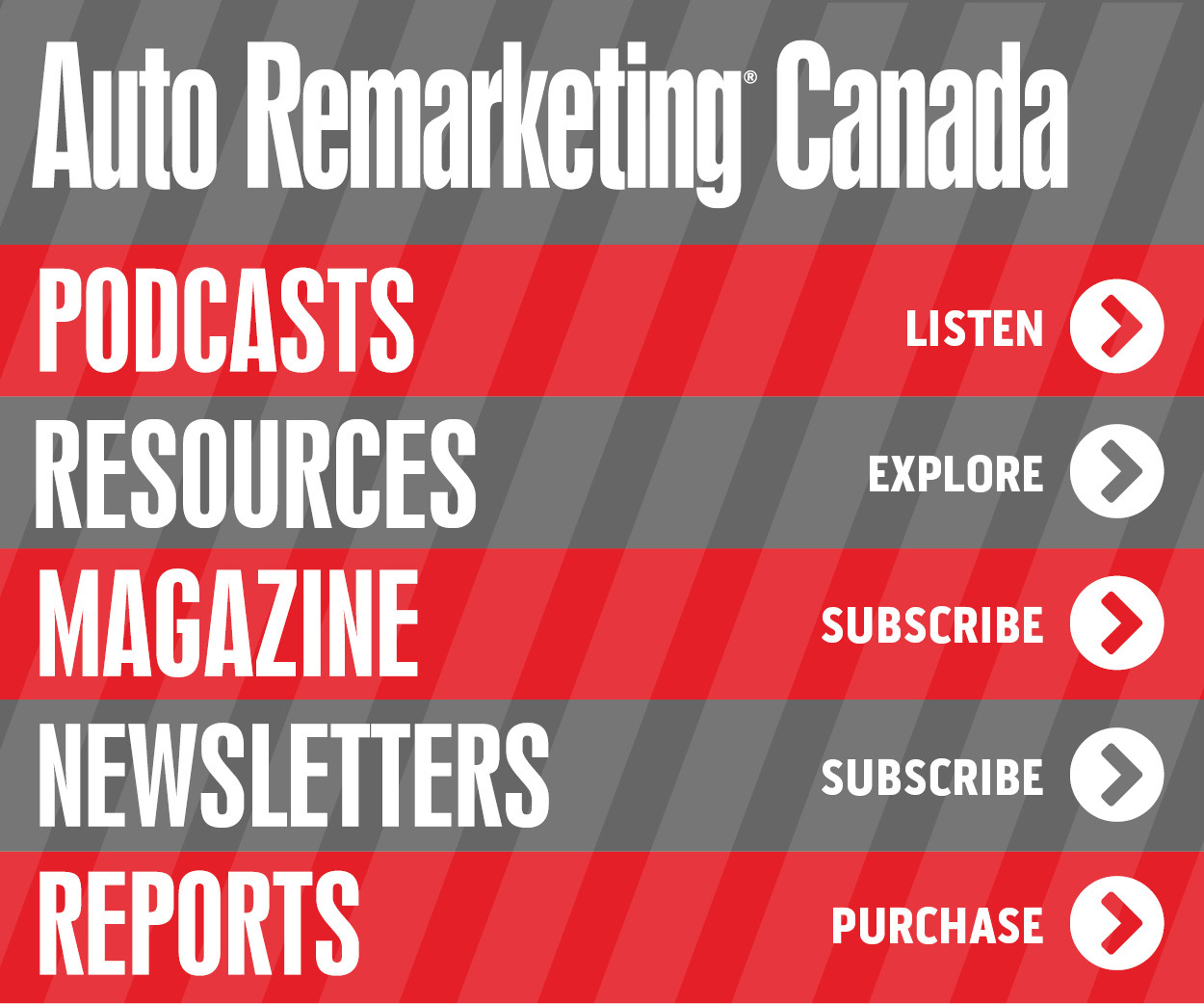COMMENTARY: Times have changed — Adapt to the new normal

Brian Murphy, Canadian Black Book
By subscribing, you agree to receive communications from Auto Remarketing and our partners in accordance with our Privacy Policy. We may share your information with select partners and sponsors who may contact you about their products and services. You may unsubscribe at any time.
MARKHAM, Ontario –
It’s nice to be able to spread some good news amongst so many dreary reports of late. Car dealerships are beginning to reopen across Ontario and Quebec, which represents 65% of new-car sales in Canada. This is great news! As we know, the auto business lives and dies by the success of its retailers.
During April (and the months prior), dealers doors had been closed and they had been scrambling to find ways to remain productive. Combine this with a general public being restricted in its travels and daily activities, and the results have been devastating to auto retailers and the economy as a whole.
But now the physical doors are opening, which is surely the beginning of the rebuild for of our industry. It is my prediction that April of 2020 will prove to be the low water mark for the auto business as a result of COVID-19 and it is all uphill from here.
But it is uphill and I am not suggesting in the least that the rebuild will be easy and/or quick. So, the uphill climb will begin from a 75% decrease in new-vehicle sales from the month of April. In that same month, our own Canadian Black Book Used Vehicle Value Retention Index dropped by a record 3.3 points compared to the month before.
With that said, the seeds of recovery have been planted. We are seeing the sales rates at auction improving. CBB auction analysts are reporting 50% of vehicles selling in the lanes versus only 10% a few weeks ago. Although we expect values to fall between now and Q3 we are expecting values to largely recover (although not fully) in the latter part of Q4.
Perhaps the most challenging aspect of the industry wide rebuild, will be the changes being forced upon our dealers. The changes I speak of are vast, at least in the short term, until a vaccine for COVID-19 is readily available, but these changes could be permanent. Showrooms are reopening, however, the function of these bricks and mortar retail locations is in flux. Only time will tell how they will fully be redeployed.
Subscribe to Auto Remarketing to stay informed and stay ahead.
By subscribing, you agree to receive communications from Auto Remarketing and our partners in accordance with our Privacy Policy. We may share your information with select partners and sponsors who may contact you about their products and services. You may unsubscribe at any time.
Before this global public health and subsequent economic catastrophe, caused by COVID-19, the auto industry was widely predicting change. Just last November at our annual Talk-Auto Canada Conference hosted by CBB and J.D. Power, much of the discussion concerned the Age of Subscriptions, Connectivity, A.I. and Big Data. The talk was dominated by ideas of technology infused marketing, selling and vehicles themselves.
Industry experts have been continually providing presentations and insight on industry disruption and the need to adapt and embrace technology. Well, disruption we have! COVID-19 is proving to be the catalyst for the oft discussed change to our business.
Dealers had largely resisted much of the proposed changes, because many might argue, ‘if it ain’t broke, don’t fix it.’ Others might suggest that change is expensive and in a business with such tight margins, extra expense is undesirable. Today, there is no choice. Change or fade away.
Online options are more important than ever before. Dealers need to have the tools online to make car shopping user-friendly and comprehensive, all the way to the purchase phase. Consumers will now more then ever, due to social distancing requirements, need ways online to seamlessly value trade-ins, choose features, colour and trim, access special offers, get quotes, estimate future values, select F&I options and purchase. The dealer website, more than ever, is now the showroom.
Further to that, dealers will need to arm sales reps with methods of communications with which they are to use to interact with clients. Technologies will be needed to accommodate the critical sales step, of the test drive, which for now will likely have to be done without the sales rep on board.
Given the record-breaking unemployment being felt currently and bottomed out consumer confidence, dealers and OEMs are getting aggressive with incentives with aims to spark demand. Such high incentive levels will negatively affect residuals and used value retention.
For now, this is the new normal. Dealers with the support of their OEMs must get creative and find solutions to help get them back to a state of profitability. Again, this is an uphill fight. But nobody ever suggested that operating a successful business was easy and that it did not have to adapt to the times. And the times certainly have changed.
Brian Murphy is vice president of research and analytics at Canadian Black Book.


